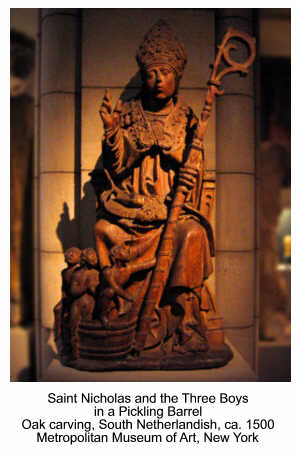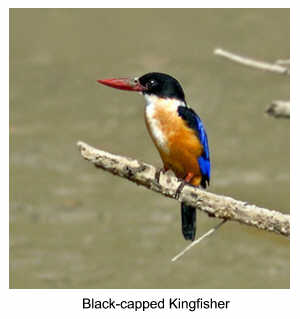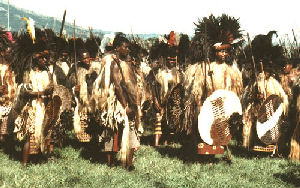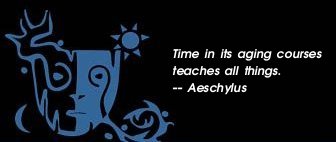|

December 2007
Find myth- and Mythic Journeys-related events on our
Annual Calendar
 December 5 — First Day December 5 — First Day
of Chanukah
This eight-day Jewish festival began at sundown on December 4. The central feature of the observance of Chanukah is the nightly lighting of the Chanukiah, an eight-branched candelabra with a place for a ninth candle, the shammes, used to light the others. One candle is lit on the first night of Chanukah, and an additional candle is lit on each successive night, until, on the eighth night, the Chanukiah is fully illuminated.
 December 6 — Feast Day of December 6 — Feast Day of
St. Nicholas
Holland
In Holland, everyone celebrates the Feast of Sinterklaas, or St. Nicholas, on the eve of December 6. After dinner, Dutch families hunt for presents, following clues in funny, anonymous poems. They also eat candies and cookies. The legend of St. Nicholas is, like the lives of many saints, shrouded in mystery. We know that he was a bishop during the fourth century. In many places in the United States and abroad, children still place their shoes by the window or door for St. Nicholas to fill them with presents and sweets. He is considered the patron saint of children.
In one legend, a terrible famine struck the land. A butcher lured three little boys into his house, and murdered and slaughtered them. He set their remains in a pickeling barrel to cure, planning to sell them off as ham. Saint Nicholas was visiting the region to care for the hungry. Upon entering the butcher's shop to ask for meat, the saint had a vision of the butcher's bloody crime, whereupon the bishop resurrected the three boys from the barrel.
December 13 — St. Lucia's Day
Italy
St. Lucia (also called Lucy) was a fourth-century Italian martyr. Her name is derived from the Latin lux, meaning "light," and thus she is associated with festivals of light. St. Lucia's Day is celebrated especially in Italy and in
Sweden, where the youngest daughter dons a crown of burning candles and wakes the family with coffee and St. Lucia buns (sweet rolls seasoned with saffron).
December 13-14 — Meteor Watch
 The Geminid meteor showers should be visible after sunset on both the 13th and 14th. Wish for clear skies! The Geminid meteor showers should be visible after sunset on both the 13th and 14th. Wish for clear skies!
December 14 — Halcyon Days begin
About 14 days of calm weather follow the blustery winds of autumn's end. The ancient Greeks and Romans believed them to occur around the time of the winter solstice, when the halcyon, or kingfisher, was brooding. In a nest floating on the sea, the bird was said to have charmed the wind and waves so that the waters were especially calm during this period.
 December 21 — Yule, December 21 — Yule,
the Winter Solstice
The earth's axis places the northern hemisphere at the farthest point from the sun. It is the shortest day and the longest night. From this time foreward, the days slowly begin to grow longer with the "rebirth" of the sun, celebrated bonfires, fire dancing, feasting. A huge log of oak or apple is set ablaze with a portion of the previous year's Yule log, and petitions are made to the gods that it never burn out. Other Yuletide tradtions include hanging wreaths of evergreen boughs, kissing under mistletoe (considered a potent fertility symbol), singing from house to house for a drink from the family's Wassail bowl or a piece of figgy pudding, decorating evergreen trees with symbols of life and light such as candles, fruit and vegetables, birds and animals, and people.
December 24 — Full Moon
The Britons called it the Oak Moon. Native Americans call it the Cold Moon. It is also known as the Frost Moon, and the Long Night's Moon. In India it is called Margashirsha Pornima
December 25 — Christmas
The traditional date for the celebration of the virgin birth of Jesus of Nazareth. By biblical accounts, he was really born when shepherds watched their flocks by night, something that would only have occured in the spring. The birth of Jesus is heralded by angels, a new and bright star appearing in the eastern sky, and was witnessed by both the lowliest nomads and three mighty kings.
 Umkhosi or Incwala
Umkhosi or Incwala
— First Fruit Ceremony
Zululand & Swazi Nations,
South Africa
During a weeklong celebration in late December or early January, the king or paramount chief is the first person in the nation to ritually taste the new season's harvest. This involves the use of special medicines created by his herbalists. The First-fruit Ceremony empowers the harvest with the blessing of the ancestors. The ritual is then replayed through the many levels of tribal authority from chiefs to sub-chiefs and head-men, eventually being enacted by the farmers and their families. To eat the new crop before the king is a sin against the tribal ancestors, and was considered treason.
|

